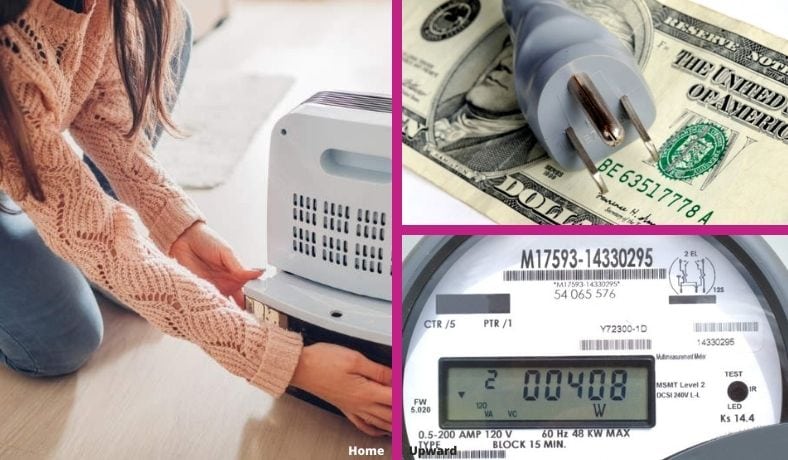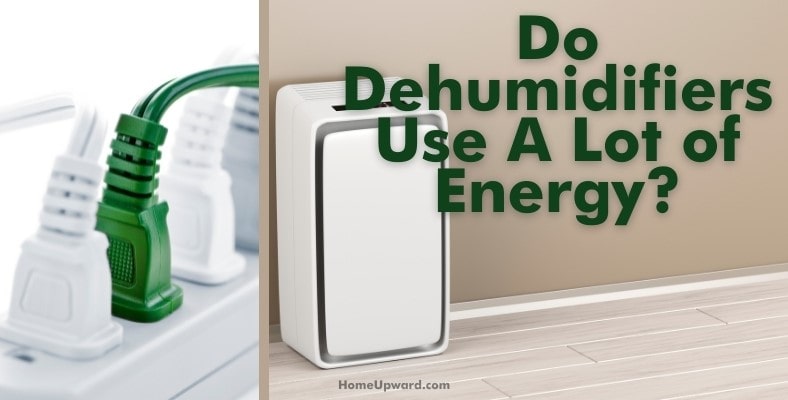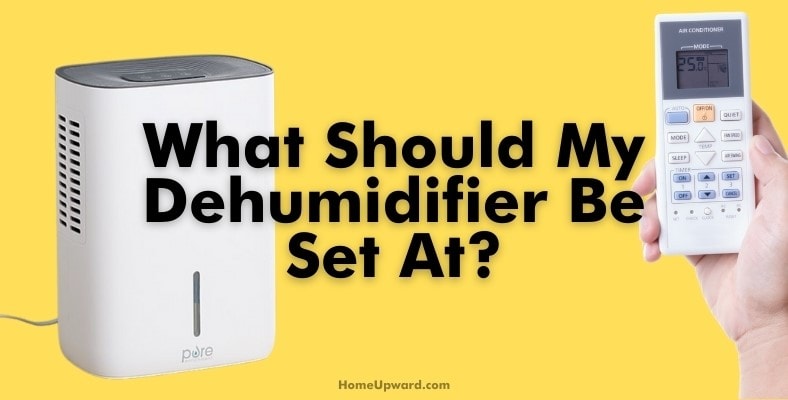Summer months mean soaring indoor and outdoor temperatures along with the awful discomfort that comes with high humidity. The problem is you may be worried about the energy cost.
Just exactly how many kilowatt-hours (kWh) does a dehumidifier use? Read on as I’ll share excellent, detailed facts to answer your question.
Contents
Do Dehumidifiers Use A Lot of Energy?
Dehumidifiers consume less energy than air conditioners (AC) and water heaters, although, running them for long periods will increase your electricity bills by quite a bit. The energy cost of dehumidifiers depends on their size, age, and energy efficiency.
Refrigerant-based dehumidifiers consume more energy than desiccant-based dehumidifiers. New dehumidifiers also consume less energy than older ones.
How many kWh does a dehumidifier use?
The kWh of electricity used is what determines how much energy a dehumidifier will use. This consumption level translates into how efficiently it removes water from the air per kWh consumed. So how many kWh does a dehumidifier use?
Different sizes of dehumidifiers consume different amounts of electricity. Below, you can discover the different electricity consumption levels for each type of dehumidifier.
Small and Medium Dehumidifiers
Small dehumidifiers with capacities of one to 10 pints of water consume about 0.88 kWh. Medium-sized models with capacities of 11 to 25 pints use an average of 1.22 kWh of electricity.
Large Dehumidifiers
Large dehumidifiers possess an average water capacity of 25 to 70 pints and consume around 1.78 kWh of electricity.
Compact Domestic Dehumidifiers
Compact domestic dehumidifiers with average water capacities of around 40 pints use about 0.36 kWh of electricity.
Compact Industrial Dehumidifiers
Compact industrial dehumidifiers have an average capacity of around 101 pints and consume about 0.76 kWh of electricity.
Large Industrial Dehumidifiers
Large industrial dehumidifiers come with water capacities of up to 116 pints and utilize around 0.69 kWh.
Large Low Grain Dehumidifiers
Large low grain dehumidifiers with an average water capacity of around 133 pints consume about 0.69 kWh of electricity.
Extra-large Low Grain Dehumidifiers
Extra-large low grain dehumidifiers have an average water capacity of 192 pints and maintain an electricity consumption rate of 0.92 kWh.
Are Dehumidifiers Expensive To Run?
Regular operation of a dehumidifier doesn’t create much of a financial burden. The cost to run one remains similar to operating computers, TVs, refrigerators, and small ACs. Dehumidifiers also prove less expensive to run than heaters.
The indoor temperature, type of dehumidifier, and energy-saving features also influence the cost of running dehumidifiers.
How much does it cost to run a dehumidifier 24/7?
A calculation of the energy costs required to run dehumidifiers provides homeowners with a way to keep tabs on their electrical expenses. Although running dehumidifiers don’t cost a lot to operate, running them every day for an entire week can raise energy bills significantly. As such, you should figure out how many kWh does a dehumidifier use.
Calculating the cost of running a dehumidifier non-stop involves multiplying the operating hours by its energy consumption per hour. Then multiply the product by the local rate for electricity. Crunching the numbers will provide you with an estimate of the total operating cost and helps you control your electrical energy expenditures.
How Does A Dehumidifier Work?
Many dehumidifiers work through refrigeration which cools the air and removes the moisture. Other units utilize the principles of absorption or adsorption where a drying material absorbs or adsorbs the airborne water molecules and removes them.
These two types of dehumidifiers function in vastly different ways based on their respective components. Read through the steps provided below for a general understanding of how the two types of dehumidifiers work.
Refrigeration
A refrigerant-based dehumidifier works on the same principles as a central air conditioner.
Here’s a simple breakdown of how a refrigerant-based dehumidifier operates:
- Warm, moist air flows into the dehumidifier through an inlet on one side. An electric fan pulls the air inside of the unit.
- The moist air passes over the coolant pipes, where it cools down and dries out.
- The moisture-free air then passes over the hot compressor/condenser coils to return to its original temperature.
- The warm, dry air blows back inside through an outlet.
- As the dehumidifier continues to remove water from the air, a collecting tray at the bottom of the dehumidifier gathers the water that would otherwise spill out.
- A plastic float in the collecting tray gradually rises as the dehumidifier draws out moisture from the air. When the tray becomes full, the float sets off an electric switch that cuts the fan and turns on an indicator light to alert homeowners that the collecting tray requires emptying.
Absorption/Adsorption
An absorption/adsorption dehumidifier uses specialized materials that hold water. The special material soaks up moisture from the air and then squeezes the water out and may involve absorption or adsorption.
Absorption represents the process whereby water enters a dry sponge-like material. Adsorption dries the air when water molecules stick to the surface of a different kind of material.
Here’s how an absorption/adsorption dehumidifier works:
- Humid air containing moisture flows into the unit via a supply duct.
- The moist air passes through a large, water-absorbing wheel, which removes the water.
- An electric fan then blows dry air back into the room.
- An electric heater keeps the inside of the air duct hot.
- The water-absorbing wheel then rotates within the heated space.
- Hot air blown onto the moisture-absorbing wheel dries it out.
- Another electric fan then expels the humid air through an exhaust duct.
What Should My Dehumidifier Be Set At?
Dehumidifiers are really helpful and very effective in places with high humidity and during hot weather. Making adjustments to the settings of the dehumidifier is an easy way to be more comfortable. However, your dehumidifier settings don’t just affect how comfortable you feel.
They also can help with other problems like allergens in the air. Dust mites pose a significant problem to individuals who remain allergic to them. Dust mites tend to thrive at temperatures at or above 70℉ and humidity levels of 75% to 80%.
You can adjust the dehumidifier’s settings to achieve temperatures and humidity levels below this range.
The best setting for your dehumidifier
Adjusting the dehumidifier to reduce the humidity below 50% inside your home makes the environment unsuitable for dust mites. The optimal range for home dehumidifiers lies between 30% to 50%, with the most common setting sitting somewhere around 45%.
How Long To Leave A Dehumidifier On
Although dehumidifiers can run continuously over long periods, regulating the humidity levels inside the home will help improve your family’s overall health. Excessively dry air can cause as much harm as humid air so finding the right balance between dry and humid air becomes essential.
When operating at an optimal level, a good dehumidifier should remove enough moisture from the air inside your home to achieve 50% to 55% relative humidity.
You can run your dehumidifier for about 12 hours a day to stay comfortable. If the relative humidity falls below 30%, you should turn off your dehumidifier.






